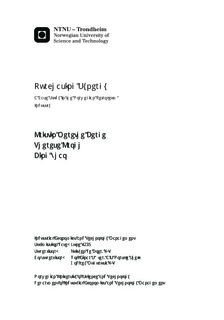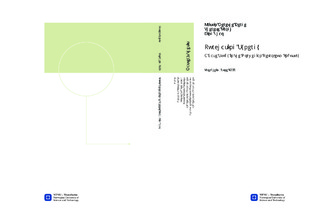| dc.description.abstract | This master thesis explores purchasing synergies, the creation of competitive advantage in purchasing. More specifically, it seeks to explain the existence of such synergies and their corresponding synergy potentials, through the answering of four research questions: (1) what purchasing synergy is and why it is important; (2) what framework may best be suited to identify and realize purchasing synergies; (3) which of and why purchasing synergies are realized or unrealized in the upstream businesses of A/S Norske Shell, and managerial implications; and (4) to what extent theory and practice correspond, and the implications for further research. The objective of the thesis is to confront theory with the empirical world. This is done by way of a qualitative and deductive research strategy, along with an analytical-conceptual research design. The thesis starts off by building logical relationships through correlation of existing literature. An empirical study is then conducted using a single, holistic case study, in which the purpose is to explain how and why theoretical phenomena occur. Based on prior research from literature on purchasing and strategic management, the thesis defines purchasing synergy as an increase in purchasing performance realized in one of three forms: economies of scale, economies of information and learning, and economies of process. It further argues that realization of a purchasing synergy occurs when two or more business units, or relationships within one business unit, join their forces and/or share functional resources, information and knowledge. Purchasing synergies are realized through purchasing synergy management, meaning the use of approaches, processes and organizational changes to identify and realize potentials for the three forms of purchasing synergy in activities and relationships between and within business units. By reinventing the Strategic Supply Wheel by Cousins et al. (2008), a framework is developed, named the Purchasing Synergy Management Wheel. This new conceptual framework has been developed for the thesis by correlating the existing model against literature on purchasing synergy (management) and other related fields. The framework is subsequently deployed on a case company, the upstream businesses of A/S Norske Shell, in order to diagnose the company's current purchasing situation. The resulting analysis reveals that all three forms of purchasing synergies, in both their realized and unrealized forms, may be explained using the individual perspectives of the different wheel elements. However, a complete understanding of the inherent complexities of why certain purchasing synergies exist or remain unrealized is possible only if the links between the elements are taken into account. Managerial recommendations are given to overcome the challenges identified in the analysis. The thesis finds that theory and practice correspond to a considerable extent, and that central aspects of related literature and the framework of analysis are supported by the findings of the analysis. It concludes with a set of implications for further research. The thesis recommends a continued focus on and study of all three forms of purchasing synergy, and a further development of the Purchasing Synergy Management Wheel. | nb_NO |

